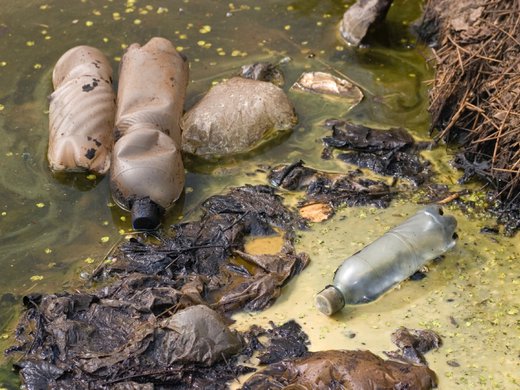Rhoda Howard-Hassmann is the Canada Research Chair in International Human Rights, Balsillie School of International Affairs and Wilfrid Laurier University.
Recently two events occurred that once again spurred discussion in Canada about its relations to its Aboriginal population.
On May 28, 2015, Chief Justice Beverley McLachlin of Canada’s Supreme Court delivered a speech in which she made explicit reference to Canada’s cultural genocide of its Aboriginal peoples. I am sure many people were surprised by this speech, and some may have speculated that in her position Chief Justice McLachlin should not have used such a phrase. On June 2, 2015, Justice Murray Sinclair released the report of the Truth and Reconciliation Commission that has been exploring the terrible abuses of Aboriginal children in residential schools from the late 19th to the late 20th century. He, too, used the phrase, “cultural genocide.”
Twenty-five years ago I wrote a draft of an article arguing that Canada’s treatment of aboriginal people did indeed constitute cultural genocide. Alas, I’ve lost that draft. But I think I was right to use the term then, and it’s right to use it now.
Cultural genocide is not a legal term, even though Raphael Lemkin, the Polish legal scholar who invented the term “genocide,” did include destruction of cultures in his list of genocidal activities. Destruction of culture disappeared from the 1948 United Nations Convention on the Prevention and Punishment of the Crime of Genocide, possible because European colonial powers were afraid they might be accused of it.
But this is what we’ve done to Canada’s Aboriginal peoples. The current discussion focuses on cultural genocide in the residential schools that some 150,000 Aboriginal children were forced to attend. Children there had their hair shorn, were forced to wear European dress, and were forbidden to speak their own languages. They were also taught “useful” skills (domestic service for girls, farming for boys) that might permit them to obtain employment with Euro-Canadians, but did not learn the skills necessary to maintain their traditional way of life. On top of this, these aboriginal children endured severe physical and sexual abuse, often imposed by the very church officials who were supposed to care for them.
One might argue that a lot of what happened to Aboriginal children was typical of what happened to anyone living in total institutions; that is, institutions where officials have total control over the inmates’ lives. Certainly, for the last forty years there has been story after story in Canada about abuse in orphanages, mental hospitals, home for the developmentally disabled, and so on. As in the residential schools, much of this abuse was by church officials.
The difference is that only a small percentage of the general population lived in these total institutions. Even though many inmates were abused in ways that make the skin crawl nowadays, the entire culture of the general population—let’s say “Euro-Canadians”—was not at risk. Plenty of other Euro-Canadians lived outside these institutions and passed on their cultures to their children. By contrast, large percentages of Aboriginal Canadians were forced into residential schools. By the time they came out, many were psychologically damaged as well as disconnected from their roots, and were unable to enjoy or pass on their cultures.
More than that, cultural genocide is not merely a consequences of the residential schools on which the Truth and Reconciliation Commission focused. Aboriginal cultures are closely connected to their land base. Without committing physical genocide of Aboriginal peoples, the British and Canadian governments over the decades removed more and more cultural groups from their lands. As Chief Justice McLachlin pointed out, Canada also prohibited some Aboriginal customs, and Christian missionaries did their best to persuade Aboriginals that their traditional spiritual beliefs were wrong and backwards.
So far Canada hasn’t done much to “reconcile” with its Aboriginal population. Prime Minister Stephen Harper was forced to issue an apology in 2008, but it hasn’t helped much (for more information on this, go to my website, https://political-apologies.wlu.ca/index.php). The federal government still provides only about half the amount of dollars per child for schools on Aboriginal reserves compared to provincial funding. A disproportionately high percentage of Aboriginals ends up in jail. Aboriginal people don’t even get enough food, in this land of plenty, as I’ve pointed out on my own blog, Rights and Rightlessness: Rhoda Hassmann on Human Rights, in a previous post from April 2014.
And no one has even figured out how to stop the abduction of women and girls who have disappeared when hitchhiking along the “highway of tears” between Prince George and Prince Rupert in British Columbia. I asked a friend who used to work in the Department of Indian Affairs why they didn’t just start a bus service that these women and girls could use, and she said it wasn’t their jurisdiction, the province would have to do it. So why doesn’t it?
If I were an Aboriginal person, I wouldn’t be interested in “reconciling” with the rest of Canada unless significant reforms were implemented first. There’s a 2005 United Nations document called, Basic principles and Guidelines on the Right to a Remedy and Reparations for Victims of Gross Violations of International Human Rights Law and Serious Violations of International Humanitarian Law. These principles provide for reparations to groups, defined as “persons who are targeted collectively”. Although they aren’t meant to be retroactive to centuries of colonial policies, they present a sense of what true reconciliation entails, including “restitution, compensation, rehabilitation, satisfaction, and guarantees of non-repetition.”
Canada has compensated some individuals for their stays in residential schools and the abuse they suffered. Also, after several decades of court challenges, some Aboriginal groups have control over their lands. In general, the law is more generous to Aboriginals than the federal and provincial governments have been. But there’s still far more to be done.
Apologies aren’t enough; either is the truth. Any Aboriginal individual willing to reconcile with the rest of Canada at this stage in history is a very generous person.


